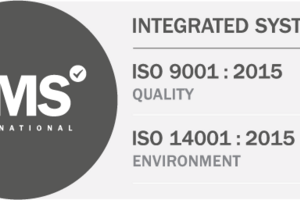22 August 2018
Warehouse lighting: tips to enhance health, safety and productivity
Installing lighting systems with longer lifecycles can help to reduce expenditure on maintenance and replacements.
With the latest generation LED lighting technology making it possible to reduce related energy expenditure by as much as 60%, the economic benefits of switching to the latest systems are fairly set in stone at this point. But the transition can also deliver some other notable savings, not least with regard to maintenance and replacement costs.
Upgrading the lighting in a sizeable warehouse facility can constitute a significant investment, but as What We’re Thinking confirms, the advantages can continue to make themselves felt for years after the work has been completed…
1) Simply put: longer lifecycles mean fewer replacements. Traditional fluorescent systems can be the subject of frequent failures. By contrast, LED lights have surged in popularity thanks in no small part to their longevity, which is often around 50,000 hours. Such a duration equates to about 5.7 years of continuous operation, 7.6 years if operated 18 hours per day, and 11.4 years if active for 12 hours per day. That’s a lot of lighting life!
2) Fewer replacements mean lower maintenance costs. The need to call on internal or external assistance to source and then install replacement lights can be substantially reduced by installing more consistently reliable systems. It is not unreasonable to forecast several hundred hours of saved time, and thus several thousand of saved maintenance costs, in the normal lifecycle of an industrial lighting system.
3) Fewer failures mean less disruption and downtime. It’s not rocket science – the less the need to clear access to lighting systems and make room for ladders, cherrypickers and the like, the less disruption there will be to the normal operations of the warehouse.
While replacement and maintenance work can sometimes be concentrated into evenings, weekends and other periods of reduced activity, this is not always practical. And in some especially congested or intensively-used warehouse spaces it can be necessary to cease operations altogether for hours or even days.
Given the escalating demands being placed on the warehouse sector (neatly summarised by the United Kingdom Warehousing Association in their report, ‘The Size and Make Up of the UK Warehousing Sector’, https://www.ukwa.org.uk), there is an onus on operators to work with as little disruption to their activities as possible. In this regard, the latest lighting systems – generally, but not exclusively, LED-based – can be a massive asset.
4) It’s one less thing to worry about! With ever-faster delivery times, more complex patterns of distribution and availability, and an increasing diversity of goods and stock types to be effectively managed, the everyday operations of a warehousing and logistics business are becoming more complex.
Hence, building systems of all kinds that generate fewer financial or technical challenges are to be highly prised. Once again, next-generation lighting can play a decisive role in achieving a facility that is lean, mean and eminently ‘fit for purpose’.
Click here to view our latest warehouse lighting guide.


